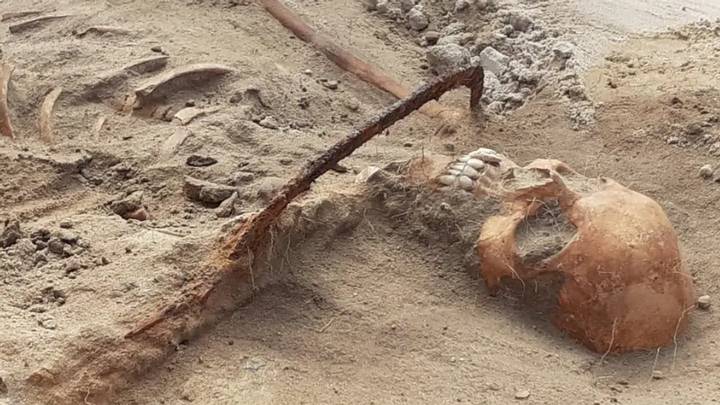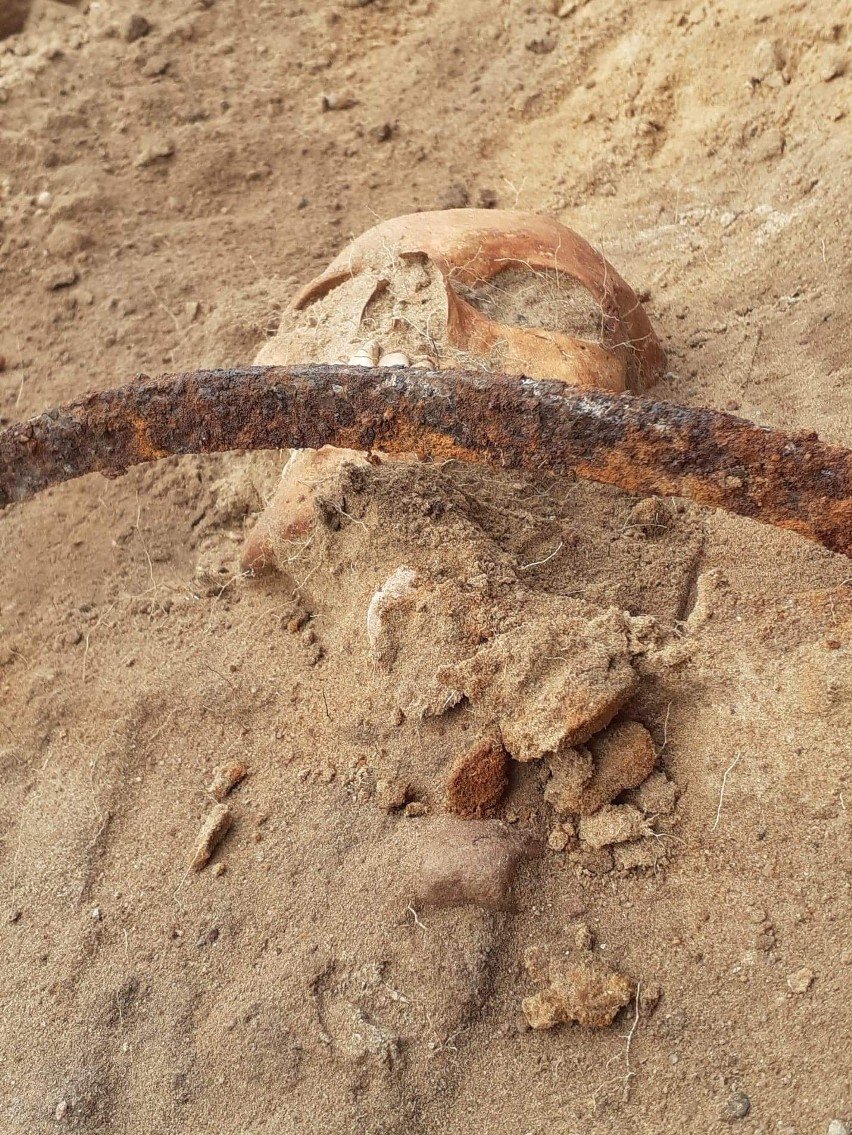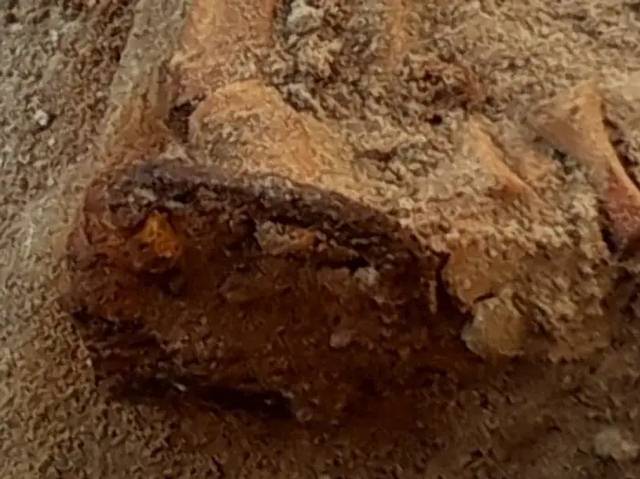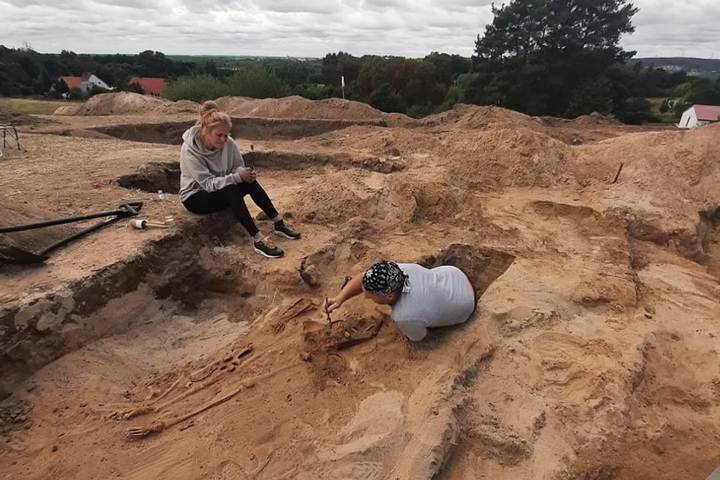The remains of a “vampire woman” pinned to the ground with a sickle at her throat and a padlocked toe to “prevent her from coming back from the dead” have been found in a Polish village.

Vampire woman with a sickle at her throat found in Pień, Poland. Credit: Miroslaw Blicharski.The Discovery Of The Remains Of A Vampire Woman In Poland
The remains were discovered during archaeological work in a 17th-century cemetery in the town of Pień, researchers also found that the skeletal remains had a silk cap on its head—indicating it had held high social status—and a protruding tooth.
Team leader Professor Dariusz Poliński of Nicolaus Copernicus University in the nearby city of Torun said the shape of the burial was unusual.
“Ways to prevent the resurrection of the dead include cutting off the head or legs, placing the deceased face down to bite the ground, burning it, and crushing it with a stone,” he explained. “The sickle was not laid flat but was placed on the neck in such a way that if the deceased ever tried to get up, the head would most likely get severed or injured.”
He added that the padlocked big toe on the skeleton’s left foot probably symbolized “the closing of a stage and the impossibility of returning.”


Padlock put around the toe of the female “vampire” skeleton. Credit: Miroslaw Blicharski.
Records of myths about the undead or vampires date back to the 11th century in Eastern Europe. People feared that some of those buried would work their way back to the surface as blood-sucking monsters and terrorize the living.
It is common to find burial sites in the region where a metal bar, or stake, has been hammered through the skull of the deceased. People at the time believed that this was a way to ensure that the person stayed dead.
In some parts of the continent, particularly among the Slavs, belief in vampire legends became so widespread that it caused mass hysteria and even led to the execution of people believed to be vampires.
People who died prematurely, such as by suicide, were also often suspected of vampirism, and their bodies were mutilated to prevent them from rising from the dead.

Researchers discovered the remains during archaeological work in a 17th-century cemetery in the village of Pień.
In 2015, archaeologists from the town of Drewsko, 130 miles away, found five similarly buried skeletons in a 400-year-old graveyard. Sickles were found pressed against the throat of an adult male, who was between 35 and 44 years old, and an adult female who was between 35 and 39 years old. An elderly woman, who was between 50 and 60 years old when she died, was buried with a sickle on her hips and a medium-sized stone at her throat.
According to popular wisdom, a sickle protected women in labor, children, and the dead against evil spirits. She also had a role in rituals designed to counteract black magic and witchcraft.
The latest discovery has now been shipped to Torun, where archaeologists will carry out further investigations.

Source: DM / BI





